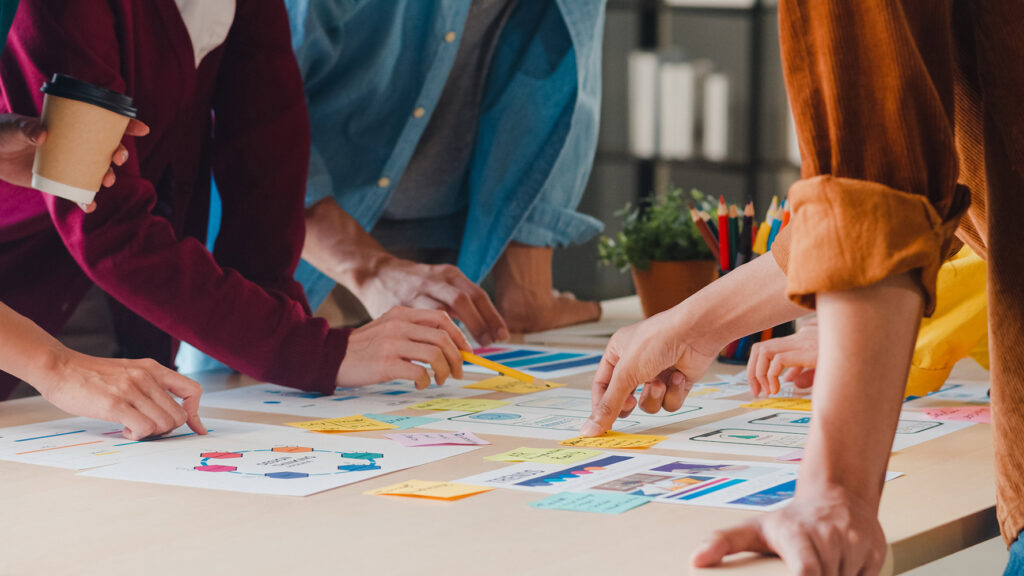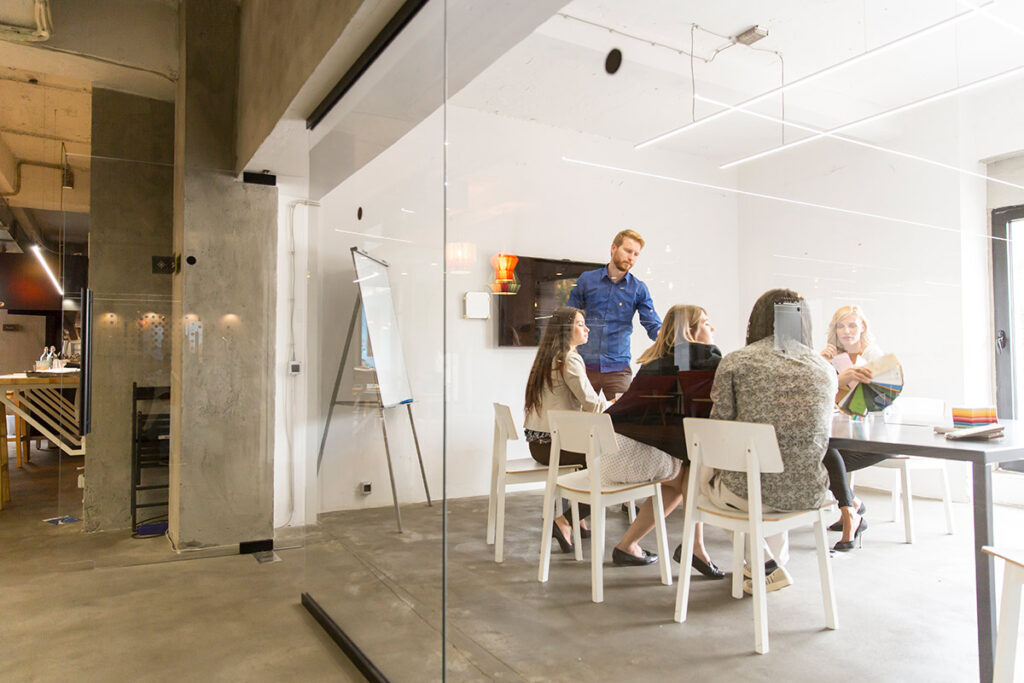Who’s behind it?
Bianca (Kretzschmar), my boss, who participates in the Culture & Change community among other things, referred me to Julia (Mittelbach), who was also working on this topic. During an initial video call, it quickly became clear that we had the same ideas in our heads and we decided to start working together. I wrote down a user story for the first bar, which generated a lot of interest. As a result, this topic was prioritized and I was invited to participate in an agile meeting with a short presentation. As a product owner, I was able to experience participating in an agile tact for the first time, which was a new experience for me. The task gave me a lot of satisfaction, because in a very short time we filled all the vacancies in the team, and there was even a waiting list for people. Performing the task with such a cheerful and motivated team is – in short – a great thing.
Joining the team were: Julia Mittelbach because she values good behavior, Christian Elm-Hartwig because he was bothered by specific things in some of the webinars and wanted to promote good practices for better collaboration, Imad Moumeni because he was curious about teamwork in different locations and wanted to actively participate in coming up with a solution. We persuaded Axel Hoppe to provide us with his wonderful illustrations for our mission, which really brought our project to life. I (Philipp Seela) was also part of the team because I wanted to work on this exciting topic in such good company.
What has happened so far…
For many of us, a marathon consisting of numerous meetings is part of everyday working life. The more often you meet people, the more often you notice unusual situations. These can be moments of great well-being, feelings of discomfort or something in between. In a survey, we asked all managers of ComTS companies in Germany about their experiences with online meetings. Incidentally, the first three verbs mentioned in this article come from this survey. In addition, pauses in speaking, rolling of the eyes, asking the same question multiple times, eating during the meeting, background noises, strange webcam angles and other technical shortcomings were listed as disruptive factors. All respondents agreed on what positively impacts online team meetings: proper moderation of a well-prepared meeting. But why is this the case?
The foundation of netiquette
To better understand how common good manners developed, let’s go back in time to the 18th century. At that time lived Adolph Freiherr von Knigge, who in 1788 wrote a book entitled. In 1788, he wrote a book entitled “On the Handling of People.” His name is synonymous with savoir-vivre rules in Germany today. “Knigge” means “handbook of good behavior” in Germany. It was not a rule book with paragraphs, but rather a case study of society. Its stated purpose was not to emulate “elite behavior” (of the court), but to emphasize universally applicable basic values and the resulting manners. The essence, which is still relevant today and virtually unfalsifiable, is that everyone should be comfortable. There is no doubt that the standards of well-being are different for a barbecue with friends than for a job interview or a holiday dinner with the boss. Nevertheless, it is important to be aware of this.
Let’s move on to the digital age: Netiquette is a word formed by combining the words “net” and “etiquette”. It describes good behavior in electronic communication. We are increasingly finding that the threshold for pain on the Internet is much lower than in “real life”. This can be attributed to “digital distance” (anonymity). Just think of the daily morning team meeting that suddenly takes place virtually at your own breakfast table. An additional complication is the omission of non-verbal signals, which also makes it more difficult to observe good manners.
Presentation of results
With these insights in mind, we entered the discussion. We wanted a format that would work both as a small repository in a moment of greater calm, and as a constant companion during a marathon of virtual meetings. At the same time, we wanted to avoid assigning blame at all costs. Our goal is not to invoke “customs” but to help enable more enjoyable interactions with others. This is what we have achieved by creating OnePager in an attractive design. Everyone will probably find some everyday situation in the illustrations. Every meeting starts better with a smile on your face. In the form of an opening slide for an event, OnePager also provides inspiration for opportunities to spend time together online. We’re more productive with a smile on our face than with a grim face because someone is annoying us with their behavior again….
And this is the important point: our netiquette is not the same set of rules as a book by the famous Mr. Knigge. It is meant to serve as a basis for discussion. Discuss it and agree on what you feel comfortable with. We have already received feedback that teams have agreed to eat during the meeting. The idea is to be courteous to each other. Create a friendly “space” so you can do your job properly. And also call meeting participants to order when mice are scampering about. Everyone will appreciate the proper structure and order.
Thank you all for your valuable feedback that helped us develop the aforementioned solution.
Check out our OnePager and join the discussion together anytime. I can tell you from personal experience that “good manners courses” can be really fun. And netiquette is not as boring as you might think. After all, it’s about the people we spend a lot of time with. So let’s be polite.




